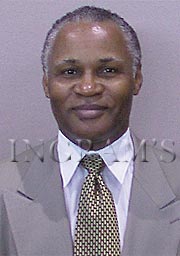by Michael May

Michael May is CIO/Technical Director IT Consulting at Spencer Reed Group, Inc.
He can be reached by phone at 913.663.4400 Ext. 101 or by e-mail at michael.may@spencerreed.com.
One challenge that organizations face today is how to coordinate their
staff with information technology (IT) to respond to priorities. Companies
often abandon a consistent approach even after they establish a clear
organizational technical profile. Such an approach can be affected by
and even replaced by fiefdoms, acquisitions, mergers, software vendors,
hardware vendors, and the IT department's need to acquire technology for
reasons no one else in the organization can understand. The impact of
this activity hampers productivity primarily because the staff that is
expected to use the technology is constantly adjusting to unexpected change,
which can destroy the ability to execute plans in a timely fashion.
Communication and cooperation aren't always seen as advantages when the
pressure of deadlines and decreasing sales are a daily occurrence. Communication
and cooperation do allow, however, critical decisions to be made before
a company engages in any enterprise-wide application. Allowing vendors
to present their products and services to all directors or department
heads in an organization is one way to foster cooperation. Such an approach
eliminates communication breakdown and alienation. Final selection should
be made after reviewing critiques submitted by all the directors. The
IT department's position should be to support the software selected regardless
of the technology.
Such a decision allows IT to present a resource that best addresses the
needs not only of staff but also of clients. At Spencer Reed, for example,
clients who use the Internet can access our system to review job orders
and to approve timesheets
submitted by our consultants. Faxed timesheets can be digitized and imported
into the system. From that point, Internet and faxed timesheets are processed
by the payroll and accounting systems. Needs were recognized before the
technology was selected.
Priorities will not be addressed if the technology is not used productively.
There may be two reasons for lack of productivity:
1. Technology users don't always want
to be trained when new software is introduced. Some users may consider
themselves beyond needing to be taught because of their "expertise"
in using systems that they know. These users don't have time and don't
want to spend any part of their budget to learn something that they can
teach themselves.
At the opposite end are users who want to avoid the system at all costs
because of "system problems" and an attitude of "we can
do it better without a computer." Neither category of user is responding
to the organization's priorities because they will not qualify themselves
to be productive based on the organization's standards. When the help-desk
logs are examined, these users usually require more than their share of
support.
2. Usage is not being monitored. Some organizations believe that
their users will surf the Internet, play games, and send personal e-mail,
so they respond by limiting computer usage. The proper response is to
monitor usage via reports, restrict access to nonessential sites, and
to enforce an organizational e-mail policy. Technology must be recognized
as essential to productivity.
In 2001, users have to contend with technology problems more than they
would like. Viruses, virus scares, lack of access to networks because
DSL providers go out of business without notice, and rolling blackouts
all contribute to the notion that technology should be viewed as an obstacle.
Too much time is spent getting technology to work. Everything is brought
into proper prospective when usage is monitored and the associated results
are identified.
Companies that coordinate staff with IT to respond to priorities will
organize themselves to be efficient in all economic climates. The ability
to meet priorities depends on training staff, employing a consistent approach
in selecting technology, monitoring usage of that technology, and planning
the next technology step.